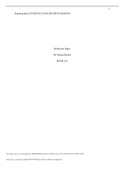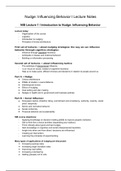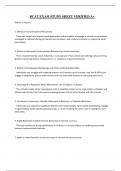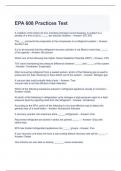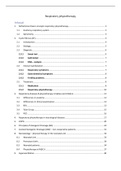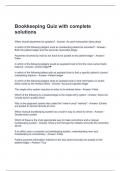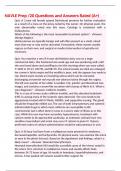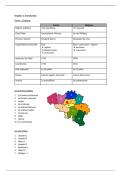Running head: STATISTICS FOR DECISION MAKING
Reflection Paper
Ny’Sharee Bunch
MATH 221
This study source was downloaded by 100000849840424 from CourseHero.com on 07-20-2022 09:47:54 GMT -05:00
https://www.coursehero.com/file/33053977/Math-221-Week-8-Reflection-Paperdocx/
, 2
STATISTICS FOR DECISION MAKING
MATH 221
1. Describe how you could use hypothesis testing to help make a decision in your
current job, a past job, or a life situation. Include a description of the decision, what
would be the null and alternative hypotheses, and how data could ideally be collected to
test the hypotheses.
Before I describe how I would use hypothesis testing in deciding on a choice in a life
situation or my present place of employment, it is essential to put the term of hypothesis testing
into point of view. Hypothesis testing is the handling of making an informed figure with respect
to something. Clearly, such a figure is to be testable through perception or experimentation. All
things considered, I will now describe how I would perform hypothesis testing to settle on a
choice with respect to an existence circumstance in the form of my workplace. From a mangers
point of view. I work at Advance Auto distribution center, so many of their results are based on
statistical measures.
In many cases, a manager must decide about a population based only on a sample of data.
Let's look at an example from operations management. Each day, an auto parts warehouse
receives shipments of freight directly from their vendors. The warehouse manager needs to be
sure the amount of freight that's supposed to be in each truck is in the trucks. Suppose the
vending companies and the warehouse manager worked out the following plan for determining
whether the entire shipment should be accepted or returned. A sample of freight is to be selected,
and one of two actions is to be taken.
A. The shipment will be accepted because the average amount of freight is equal to 2000
pieces. In other words, on average, the trucks contain the amount of freight they're
supposed to, in this case, 2000 pieces.
In statistics, this is called the null hypothesis, it represents the action to be taken if the
amount in the bottles is what it's supposed to be. We write the null hypothesis as : µ=2000
pieces.
B. The shipment won't be accepted because the average amount in the trucks isn't equal to
2000 pieces. In other words, on average, the trucks don't contain the amount of freight they're
supposed to, 2000 pieces.
In statistics, this is called the alternative hypothesis, This represents the action to be taken if
the amount in the bottles is not what it's supposed to be. We write the alternative hypothesis as
: µ ≠ 2000 pieces.
The real statistical question is where to draw the line between when we return the shipment
(reject the null hypothesis) and when we say it’s acceptable (accept the null hypothesis).
This study source was downloaded by 100000849840424 from CourseHero.com on 07-20-2022 09:47:54 GMT -05:00
https://www.coursehero.com/file/33053977/Math-221-Week-8-Reflection-Paperdocx/

